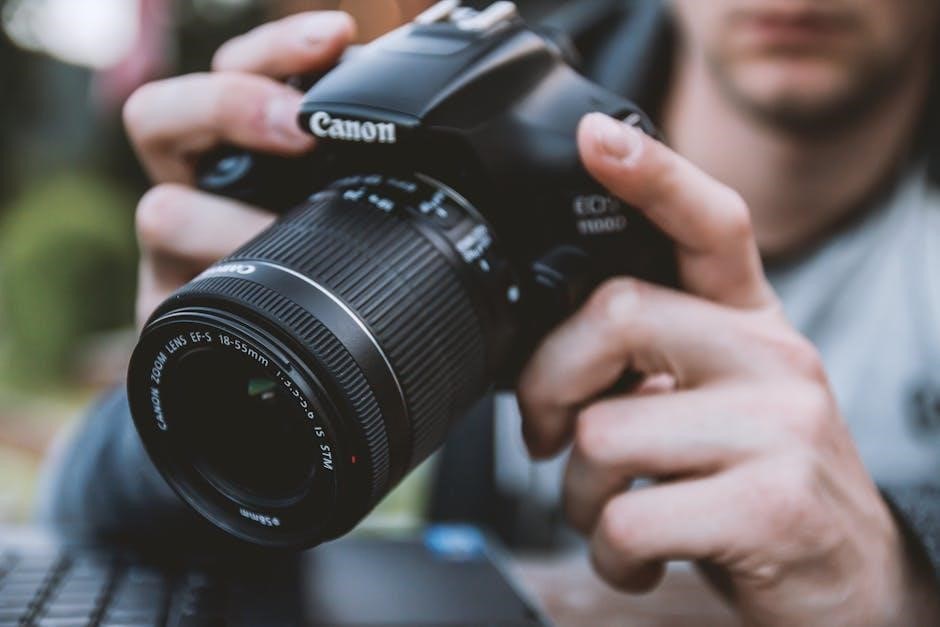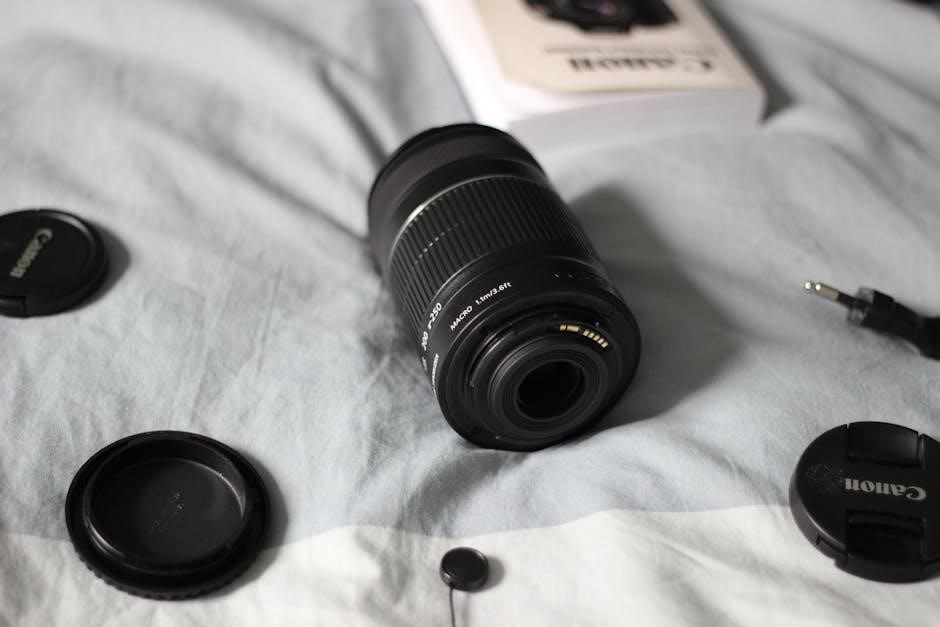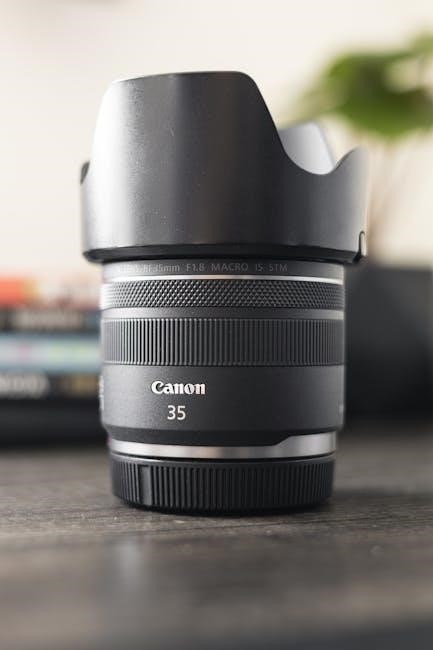zoom l20 manual

Zoom LiveTrak L-20 Manual Overview
The Zoom LiveTrak L-20 manual serves as a comprehensive guide to understanding and operating the digital mixer recorder. It provides essential information on setting up‚ using its features‚ and troubleshooting. The manual aims to help users maximize the L-20’s capabilities.
Key Features of the Zoom LiveTrak L-20
The Zoom LiveTrak L-20 boasts several key features‚ including multitrack recording‚ a built-in USB audio interface‚ and intuitive mixer controls. These features combine to offer a versatile solution for live sound mixing‚ multitrack recording‚ and studio production‚ making it a powerful tool.
20 Discrete Channels and 22 Tracks
The Zoom LiveTrak L-20 is designed with a generous input capacity‚ featuring 20 discrete channels‚ which accommodate a wide range of audio sources. This extensive channel count allows users to connect numerous microphones‚ instruments‚ and line-level devices simultaneously. The L-20 offers 16 mono channels and 2 stereo channels.
Each channel provides individual control over parameters like gain‚ EQ‚ and effects‚ providing precise sound shaping and mixing capabilities. The availability of 22 tracks for recording ensures that every input can be captured separately. This is ideal for live performances and studio sessions.
The ability to record each channel independently provides flexibility during the mixing and mastering stages. This feature allows engineers to fine-tune individual tracks‚ correct errors‚ and create a polished final product. The L-20 captures audio at resolutions up to 24-bit/96 kHz‚ ensuring high-quality recordings.
Whether recording a live band‚ a podcast‚ or a studio album‚ the L-20’s 20 discrete channels and 22 tracks provide ample capacity and flexibility. This ensures that every sonic detail is captured with clarity.
Multitrack Recording Capabilities
The Zoom LiveTrak L-20 excels in multitrack recording‚ enabling users to capture up to 22 individual tracks simultaneously. This capability is essential for musicians‚ bands‚ and audio engineers who require detailed control over their recordings. Each of the 20 input channels‚ along with a stereo mix‚ can be recorded independently‚ providing unparalleled flexibility during post-production.
The L-20 records directly to an SD card‚ eliminating the need for external recording devices. This streamlines the recording process and makes the L-20 a portable solution for live performances and on-location recording. The L-20’s multitrack recording capabilities extend beyond simple audio capture.
The ability to overdub and punch-in/out allows for precise editing and refinement of recordings. This is invaluable for correcting mistakes and adding layers to musical arrangements. Users can capture audio at high resolutions‚ up to 24-bit/96 kHz‚ ensuring pristine sound quality.
With its intuitive interface and comprehensive features‚ the Zoom LiveTrak L-20 simplifies multitrack recording. It empowers users to create professional-quality recordings with ease.
USB Audio Interface Functionality
The Zoom LiveTrak L-20 functions as a versatile USB audio interface‚ offering seamless integration with computers and digital audio workstations (DAWs). With its 22-in/4-out configuration‚ the L-20 allows users to record multiple channels simultaneously into their preferred recording software. This functionality transforms the L-20 into a central hub for both live performance and studio recording.
The USB audio interface capability provides a direct connection for transferring high-quality audio to a computer. This eliminates the need for additional audio interfaces and streamlines the recording process. The L-20’s compatibility with both Mac and Windows operating systems ensures broad accessibility for users.
Beyond recording‚ the L-20’s USB audio interface functionality enables playback from a computer. This allows users to incorporate backing tracks or virtual instruments into their live performances. The L-20’s intuitive routing options provide flexible control over audio signals.
The device’s low-latency performance ensures accurate timing and responsiveness. The Zoom LiveTrak L-20 simplifies audio workflows and empowers musicians and audio engineers with a powerful tool.
Navigating the Zoom LiveTrak L-20 Manual
Effectively using the Zoom LiveTrak L-20 requires understanding how to navigate its comprehensive manual. The manual is structured to guide users through various aspects of the mixer‚ from basic setup to advanced features. Familiarizing yourself with the manual’s organization is crucial for quick access to information.
The manual typically includes a detailed table of contents‚ allowing users to jump directly to relevant sections. Indexing is another key feature‚ enabling users to search for specific terms and topics. The manual often employs a hierarchical structure‚ with main sections divided into sub-sections for clarity.
Diagrams and illustrations are frequently used to visually explain complex concepts and procedures. These visual aids enhance understanding and make the manual more accessible. Pay close attention to the headings‚ subheadings‚ and formatting conventions used throughout the manual.
Understanding these elements will significantly improve your ability to find the information you need. The manual is an invaluable resource for unlocking the full potential of the L-20‚ ensuring a smooth and efficient workflow.
Downloading the Operation Manual
The Zoom LiveTrak L-20 operation manual can be easily downloaded from the official Zoom website. This digital version provides a convenient and accessible way to learn about all the mixer’s features and functions.
Zoom Website Link
To access the most up-to-date version of the Zoom LiveTrak L-20 operation manual‚ users should visit the official Zoom website. This ensures that they are referencing the correct information for their specific model and firmware version. The website offers a direct link to download the manual in PDF format‚ allowing for easy viewing on various devices.
Navigating to the support or downloads section of the Zoom website is the first step. From there‚ users can search for the LiveTrak L-20 model to find the corresponding manual. The website may also provide additional resources‚ such as firmware updates‚ software downloads‚ and frequently asked questions‚ which can further enhance the user experience. Checking the Zoom website regularly ensures access to the latest information and support materials for the LiveTrak L-20.
The link to the manual is typically located within the product support page for the L-20. It is recommended to bookmark this page for future reference. Always ensure the downloaded manual corresponds to your specific L-20 model‚ as there might be variations between different versions. By utilizing the official Zoom website‚ users can be confident they have the correct and most current documentation.

Using the Mixer Controls
The Zoom LiveTrak L-20 boasts an intuitive mixer control layout designed for both live performance and studio recording. Understanding the function of each knob‚ fader‚ and button is essential for effective operation. The mixer section allows users to adjust input levels‚ EQ settings‚ and effects sends for each of the 20 discrete channels. Familiarizing yourself with these controls will greatly improve workflow.
Each channel strip features a gain knob for adjusting input sensitivity‚ ensuring optimal signal levels. EQ controls provide tonal shaping capabilities‚ allowing users to fine-tune the sound of each instrument or vocal. The L-20 also offers built-in effects‚ accessible via the send knobs on each channel. These effects can add depth and dimension to the mix. Smooth faders provide precise control over channel volume‚ enabling seamless transitions and dynamic mixing.
Furthermore‚ the master section of the mixer controls the overall output level and monitoring options. Learning how to route signals and manage the master output is crucial for achieving a polished final mix. The L-20’s mixer controls are ergonomically designed and logically arranged‚ making it easy to navigate and adjust settings on the fly.

Understanding the Touchscreen Interface
The Zoom LiveTrak L-20 features a color touchscreen interface that provides visual feedback and control over various parameters. The touchscreen complements the physical mixer controls. It offers a more in-depth view of settings and options. Navigating the touchscreen is essential for accessing advanced features and customizing the L-20 to your specific needs.
The home screen displays an overview of the mixer’s status‚ including input levels‚ EQ curves‚ and effects settings. Tapping on a channel strip brings up a detailed view of its parameters‚ allowing for precise adjustments. The touchscreen also provides access to the L-20’s recording functions‚ allowing users to start‚ stop‚ and manage recordings with ease.
Furthermore‚ the touchscreen interface offers access to system settings‚ such as sample rate‚ bit depth‚ and routing options. Customizing these settings can optimize the L-20 for different recording scenarios. The touchscreen is intuitive and responsive‚ making it easy to navigate and adjust settings quickly. The visual feedback provided by the touchscreen helps users to monitor signal levels and identify potential issues.

Recording to SD Card
The Zoom LiveTrak L-20 offers the capability to record directly to an SD card‚ providing a convenient solution for capturing multitrack recordings without needing a computer. The L-20 can record up to 22 tracks simultaneously‚ including all 20 discrete channels and a stereo mix; This feature makes it ideal for live performances‚ rehearsals‚ and studio sessions.
To record to an SD card‚ insert a compatible SD card into the designated slot on the L-20. Ensure the SD card has sufficient storage space for the intended recording duration. The L-20 supports SD cards up to a certain capacity‚ as specified in the manual. Select the desired recording settings‚ such as sample rate and bit depth‚ from the system menu. Higher sample rates and bit depths result in better audio quality but require more storage space.
Once the settings are configured‚ press the record button to start recording. The L-20 will create a new folder on the SD card for each recording session. Each track is saved as an individual WAV file‚ making it easy to import into a DAW for mixing and mastering. After recording‚ safely eject the SD card and transfer the files to your computer.
Specifications and Technical Details
The Zoom LiveTrak L-20 boasts impressive technical specifications that make it a versatile tool for recording and mixing audio. It features 20 discrete input channels‚ comprising 16 mono channels with XLR/TRS combo jacks and two stereo channels with dual TRS inputs. Each mono channel is equipped with a high-quality microphone preamp‚ providing up to 60dB of gain.
The L-20 supports recording at sample rates up to 96kHz and bit depths up to 24-bit‚ ensuring high-resolution audio capture. It also functions as a 22-in/4-out USB audio interface‚ allowing seamless integration with computers for recording and playback. The mixer section includes 3-band EQ with sweepable mid-range on each channel‚ along with built-in effects such as reverb‚ delay‚ and chorus.
Other notable specifications include five monitor outputs for custom headphone mixes‚ a dedicated control room output‚ and a slate microphone for adding voiceovers or markers to recordings. The L-20 also features a bright‚ color touchscreen for intuitive navigation and control. The unit weighs approximately 3.71 kg and has dimensions that make it suitable for both studio and live environments.
Troubleshooting Common Issues
Encountering issues with the Zoom LiveTrak L-20 is not uncommon‚ but many problems can be resolved with simple troubleshooting steps. One frequent issue is the absence of audio input. Verify that all cables are securely connected to the appropriate inputs and that the microphones or instruments are functioning correctly. Check the input gain levels on each channel to ensure they are adequately amplified.
Another common problem is related to recording difficulties. Confirm that an SD card is properly inserted and formatted correctly. Ensure that the recording settings‚ such as sample rate and bit depth‚ are compatible with the project requirements. If experiencing USB connectivity issues‚ try using a different USB cable or port. Restarting the L-20 and the connected computer can often resolve driver-related problems.
If encountering touchscreen unresponsiveness‚ try recalibrating the screen through the system settings. For issues with built-in effects‚ verify that the effects are enabled and that the send levels are appropriately adjusted. Consulting the Zoom website for firmware updates and checking user forums for shared solutions can provide additional assistance in resolving more complex issues.
Leave a Reply
You must be logged in to post a comment.